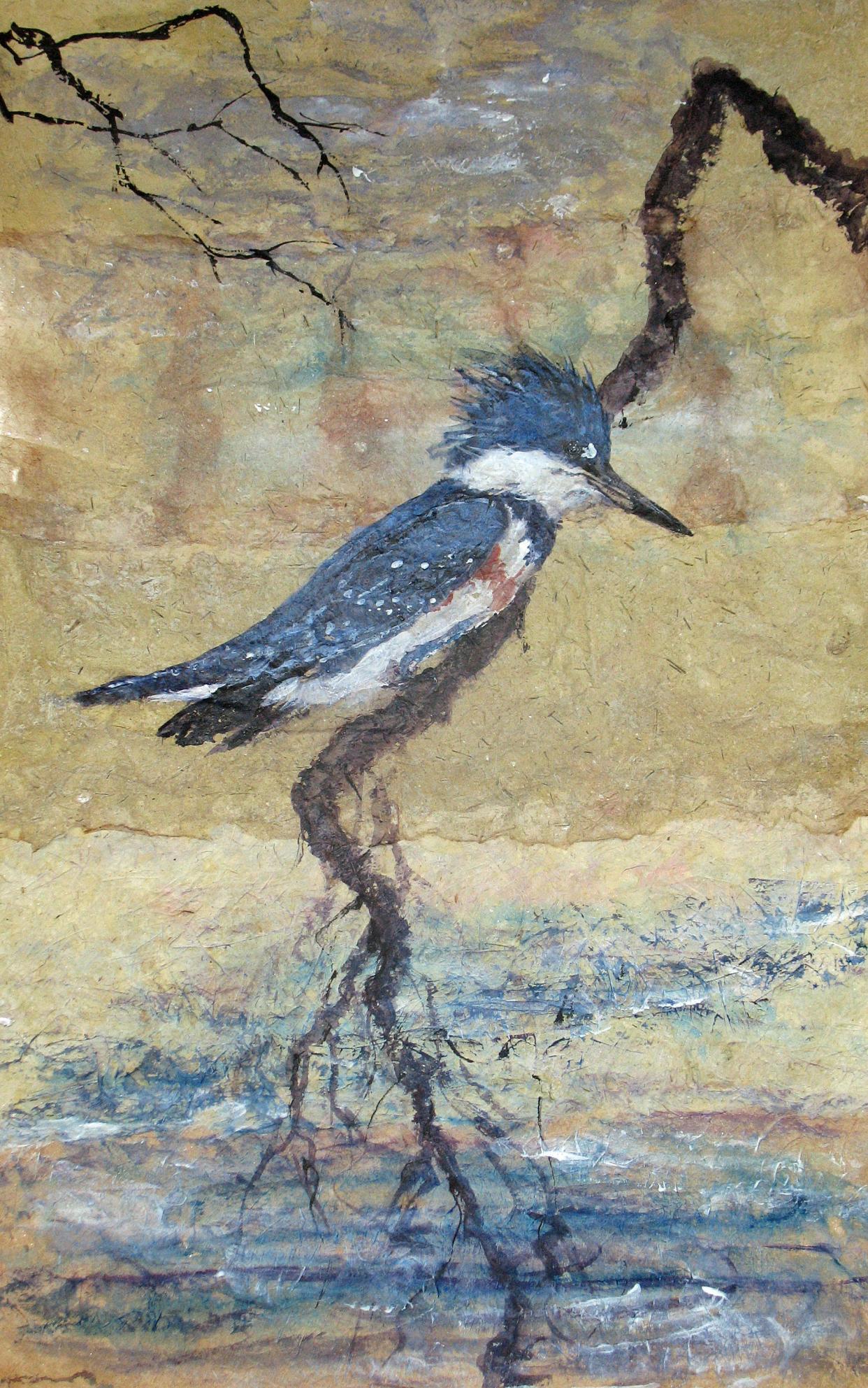Nature Journal: The belted kingfisher is a graceful fisher

Some birds are secretive. Others are deliberately conspicuous. Kingfishers fall into the latter category. Their rattling calls reverberate along waterways during the breeding season from early spring into mid-summer, and their flashing wings are apparent year round in many areas throughout the southern mountains.
If you paddle a canoe downstream, a kingfisher will often fly from perch to perch just ahead of you for upwards of a half mile. They’re keeping an eye on you and it seems as if they want to be seen, too.
With most bird species, it’s the male that usually displays the more eye-catching plumage. The female kingfisher is an exception. In addition to the blue-gray chest band displayed by her counterpart, she sports an additional richly-colored chestnut breast band. And in front of the bill are two white “false eyes” that perhaps serve as sighting devices.
Be that as it may, the bird is able to capture 10 fish per day with about 40 strikes. Because she raises her young in a nest chamber deep in the ground, the female’s maternal duties don’t make her an easy target for predators. She has no real need for the sort of subdued protective coloration characteristic of female cardinals, towhees, and numerous other species.
Look for the entrances to their nest chambers. Situated in a steep bank from 10-40 feet above ground level, the round entranceway is about the size of a softball. The tunnel leading to a nest chamber may be from 3-6 feet or more feet in length. If it’s being used, there will be two grooves at the base of the hole where the birds’ feet drag as they plunge headfirst into the opening like a spear unleashed from afar with great accuracy.
Kingfishers have toes that are fused together, thereby allowing them to excavate more efficiently. Obviously designed to prevent access by predators, these nest sites can be located some distance from water, often in steep roadway cut-banks or where there has been excavation around a building site.
Once the young kingfishers are fledged, their parents teach them how to fish like a kingfisher should fish; that is, not only with efficiency but also with style. Lots of birds fish in one way or another, but none—except perhaps the terns—do so with the streamlined exuberance and grace of a kingfisher. They will locate prey (usually small fish near the surface of the water) from perches located on tree limbs, telephone wires and similar structures. But they are at their best when hovering over water that requires plunging from directly above and full submersion.
One morning I was birding along the edge of a marsh adjacent to Turtle Pond Road several miles west of Highlands. It was quiet until I heard the strident rattle of a female kingfisher making her entrance as if the marsh was a stage upon which she was the prima donna.
After circling the marsh to stake out her self-designated boundaries, she began systematically patrolling each of the five or so open areas in the marsh where there were pools created by beavers. Facing into the wind over one of the far pools—her wings a blur in the sky—she was remindful of the “dapple-dawn-drawn Falcon” riding the “level underneath him steady air” in Gerard Manley Hopkins’ poem "The Windhover."
She hovered over each of the pools without success before moving to one 30 or so yards from where I was standing, binoculars in hand. If the bird was aware of me—as she must have been—there was no sign of it. Once again she turned into the wind, tilted the angle of her wings and for many moments hung suspended peering directly into the water. This time she saw something and in the blink of an eye was plummeting downward and disappeared in the water. She was no longer visible for some seconds before she emerged from the pool with a fish clamped in her bill and sculled away on flashing wings.
It all happened so fast that it took me awhile to piece the sequence of events together. But what clearly remains in my mind’s eye is the manner in which the bird penetrated the water like a needle passing through cloth.

George Ellison is a naturalist and writer. His wife, Elizabeth Ellison, is a painter and papermaker who owns a gallery in Bryson City. Contact them at info@georgeellison.com or info@elizabethellisongallery.com or write to P.O. Box 1262, Bryson City, NC 28713.
This article originally appeared on Asheville Citizen Times: Nature Journal: The belted kingfisher is a graceful fisher

